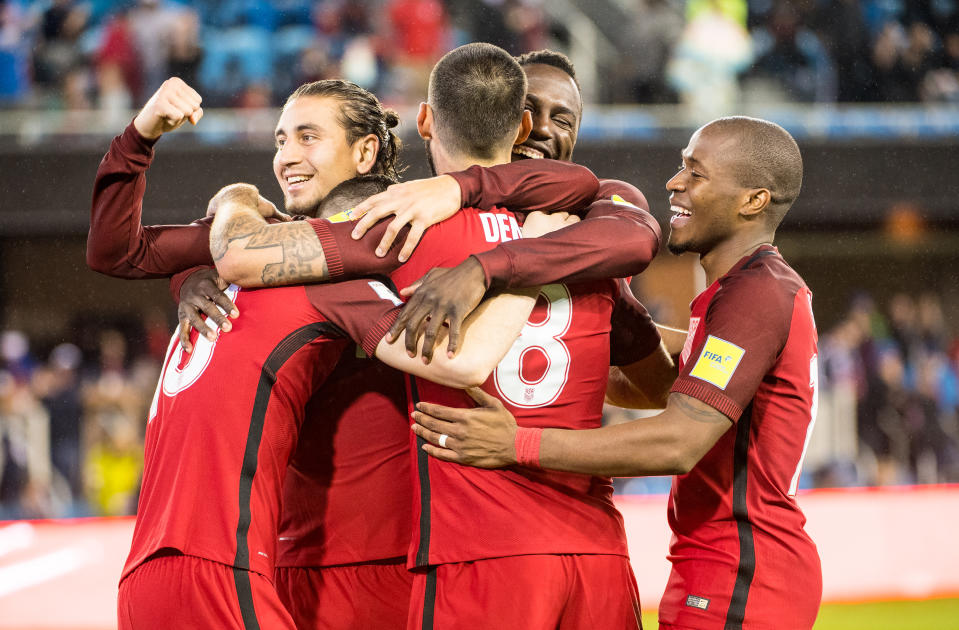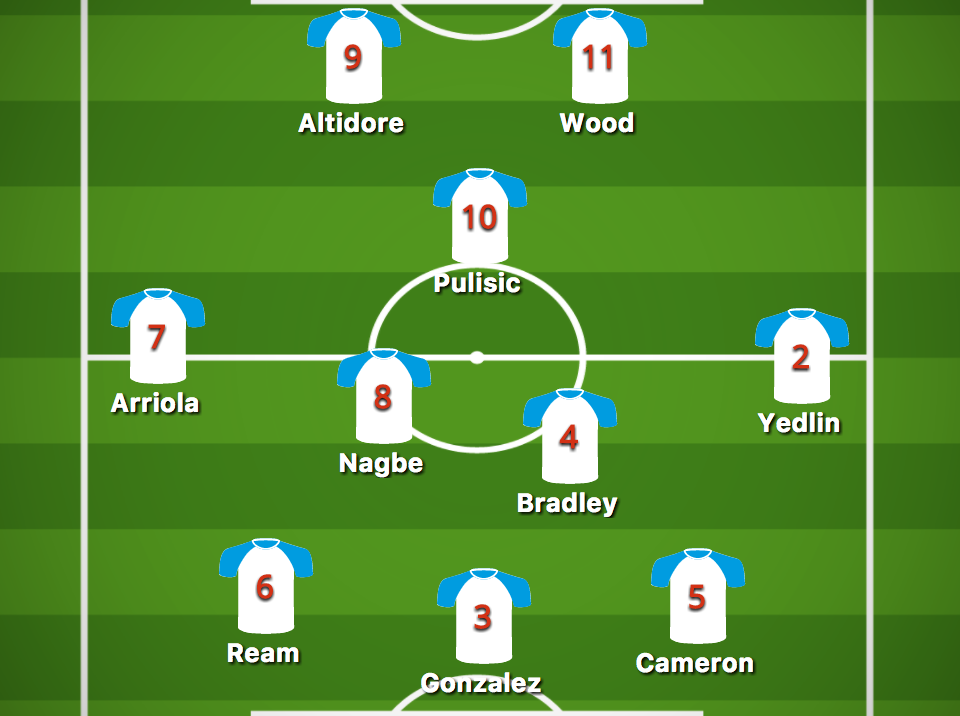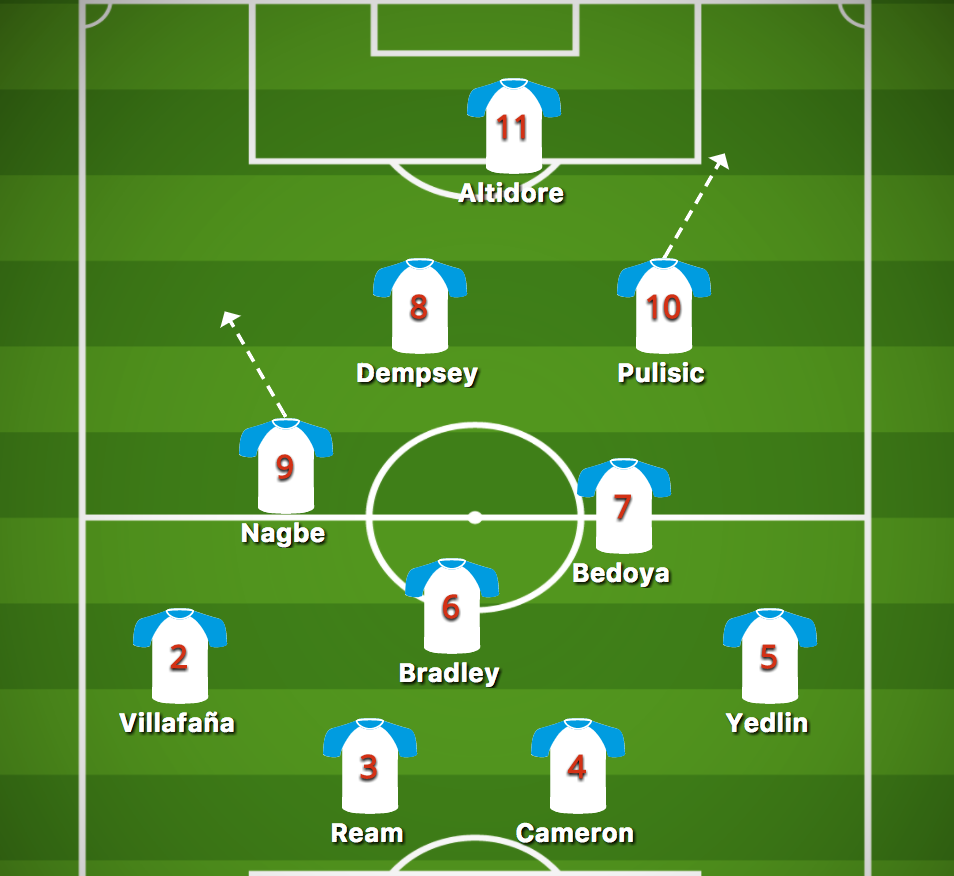U.S.-Panama: Five tactical questions and one lineup suggestion for Bruce Arena
We are less than 48 hours away from the biggest World Cup qualifier a United States national team has played in 28 years, and having had an entire month to consider, study, agonize over and discuss the ins and outs of that game – Friday, vs. Panama, 7:30 p.m. ET – an off-putting feeling hangs over every argument that has been made, every question that has been asked, every preview that has been written: We have absolutely no idea what the U.S. men’s national team will look like on Friday.
Manager Bruce Arena knows. The players (hopefully) know. But we are in the dark.
Of the 25 players Arena has called into camp ahead of two matches that will determine whether the U.S. appears in Russia next summer, there is one – yes, only one – whom you can point to and say, I know exactly what role he will be playing Friday night.
[Follow FC Yahoo on social media: Twitter | Facebook]
The one certainty is Michael Bradley. He will don the captain’s armband and take the field as a deep-ish central midfielder. Questions swirl around the rest. Christian Pulisic and Darlington Nagbe will be on the field, but where? DeAndre Yedlin and Jorge Villafaña (probably) will be playing, but as fullbacks? Or wingbacks?
Any one or two of Jozy Altidore, Bobby Wood and Clint Dempsey could start up front. Any one or none of Kellyn Acosta, Alejandro Bedoya and Dax McCarty could partner Bradley. Paul Arriola is a wild card. And almost any two- or three-man combination of the four center backs could feature.
Oh, and the goalkeeper position? Arena says he’s deciding between Tim Howard and Brad Guzan on Thursday.
So, yeah … a lot to address here. A lot of questions to ask. But we’ll boil them all down into five, and in the end we’ll have an answer to the overarching one: How should the U.S. approach Friday’s moment of truth?

1. 4-1-2-1-2? 4-2-3-1? 3-5-2?
Personnel trumps shape in terms of importance. But based on the personnel available to him, and based on his expectations for Panama, Arena has a decision to make. The decision centers on the number of central defenders he plays.
There has been plenty of talk about a 3-5-2. Arena’s Yanks have only played three defenders in specific situations. They played a defensive 3-4-3 (5-4-1) in the one Hex game they entered as a significant underdog. And they used a desperate 3-5-2 to chase a game they were losing.
None of those apply to Friday, so there is no precedent for any three-at-the-back system to which Arena would turn. But all such systems are different, and there are variations that would make sense in Orlando.
The thinking is this: Panama only really needs a point. It is one ahead of the U.S. in third place. It’s away from home. So it will set up to get that point. It played two strikers against the Yanks in Panama City back in March, but whether it sets up in a 4-4-2 or a 4-4-1-1 or a 4-5-1, it will bunker in two banks of four, defend, and look to play on the counter through Gabriel Torres, a supporting midfielder and one of two speedy wingers.
The U.S. will have a lot of the ball. Its midfielders will take chances going forward, and its fullbacks will be counted on to provide wide attacking threats. But it must be wary of the Panama counter. So rather than reining in the fullbacks, Arena could unleash them – and replace Villafaña with Arriola on the left – by bringing in an extra center back to guard against Panama’s quick-hitting attacks.
So what would this look like? Bradley would essentially play as the lone pivot, with Cameron or Ream given the freedom to step into midfield with the ball. Nagbe would be Bradley’s link to the attack, and Pulisic would roam underneath and beside Altidore and Wood up top.

But there’s significant downside here. If the game doesn’t play out as expected, and if it turns into a scrappy midfield battle, the U.S. would be woefully underprepared. The Nagbe-Bradley two-man partnership was exposed against Costa Rica for its lack of steel. Similar problems could arise.
Another issue would be comfort within the system. For that 3-5-2 to be effective in a methodical game, with the U.S. dominating the ball, the front three – and really four, including Nagbe – would have to be fluid. And while fluidity always sounds appealing, it’s difficult for international teammates who only train together for one week per month, at most, to work in conjunction with one another in undefined roles.
The tried and trusted option, then, is some configuration in front of four defenders. And that configuration depends on personnel.
2. The Pulisic Question
There’s this fascination with playing Pulisic centrally that largely stems from his best game in a U.S. shirt, and the U.S.’s best game of the Hex. Pulisic lined up at the tip of a midfield diamond behind Altidore and Dempsey, in front of Bradley, and in between Nagbe and Sebastien Lletget in March. The U.S. tore Honduras to shreds. So why not just replicate that shape with Bedoya in for Lletget?
Because Honduras was tactically naive that night. The game was incredibly open. Friday’s likely won’t be.
It makes a ton of sense to play Pulisic centrally in an open game, because if your best player is running free with the ball, naturally, you want him as close to the middle of the field as possible. But, by the same token, it’s harder to find that type of space in the middle of the field, especially in a tighter game. And a tighter game is what we expect Friday’s to be.
Pulisic should and will have the freedom to tuck inside in search of space in between the lines. But you can’t afford to park him there in a regimented shape, because you risk drastically reducing his time on the ball.
On the other hand, it’s not as simple as saying, “Well he plays out wide for Dortmund, so he should play there for the U.S.” The two situations and systems are completely different.
But in a match like the two in September, and like the two we expect to see in October, he is best as something resembling a wide forward or winger.
3. The center back question
Before we get to Pulisic’s partners in attack, let’s address the lone hole at the back. This answer is brief. The left-sided center back spot is gaping. Gonzalez is not a viable option because he’s one of the slowest outfield players on the entire U.S. roster. The choice is between Ream and Besler, either of whom would be better able to deal with Panama’s pace. And there’s not much separation between the two. So take your pick.
4. Altidore? Wood? Dempsey?
Throughout the first half of 2017, this was not even a question. Arena paired Altidore and Dempsey for his first three qualifiers in charge. But then he made wholesale changes for the Mexico game. And then he started using Dempsey off the bench at the Gold Cup. And that made sense, and looked set to continue … until Deuce played a full 90 in taxing conditions in Honduras.
Tactically, in a game condensed in the U.S.’s attacking half, an Altidore-Dempsey partnership makes more sense than anything involving Wood. If Panama sits deep, Wood’s pace is less valuable. The Hamburg striker is best as either a back-line-stretcher or a poacher off the bench. His weakness – link-up play – is one of Altidore’s strengths, and it’s a trait the U.S. will need on Friday.
What Wood does do better than the other two is hassle opposing defenders without the ball. But Panama might not want much of the ball anyway. An Altidore-Dempsey pairing seems like the best option, with Wood waiting in reserve, and waiting to start in Trinidad on Tuesday (8 p.m. ET, BeIN Sports, go90 app).
5. Bradley’s central midfield partner(s)
The most agonizing question of all lies smack dab in the middle of the field. There is nothing resembling a sure-fire option as a second central midfielder. Acosta would top the list, but he’s been in and out of FC Dallas’ lineup with a groin issue and fatigue. Neither Bedoya nor McCarty has started a qualifier under Arena. Benny Feilhaber hasn’t played in a qualifier this decade.
If Arena wants a true-ish double pivot, with Nagbe as a true left winger, he could risk Acosta. If he wants a safe option that would allow Bradley to press high up the field, McCarty could realistically start. But Bedoya is the most likely of the three. He came on for Lletget with the score at 1-0 in that 6-0 Honduras thrashing back in March. He’s versatile, and can slot in as a No. 8 or a wide midfielder. And he has big-match experience.
[More FC Yahoo: What missing the World Cup would mean for American soccer]
So let’s say we’re going with Bedoya in midfield, Altidore and Dempsey up top, and Ream alongside Cameron in a four-man defense. What would that look like?
SUGGESTED LINEUP
How about an unbalanced, crooked Christmas tree formation with Bedoya and Nagbe flanking Bradley, Dempsey as a narrow left forward, Pulisic as a right forward, and Altidore leading the line:

Such a formation would allow Pulisic to drift wide or central depending on the nature of the game. It would give both him and Dempsey freedom. It would allow Nagbe to join the attack as a left winger when possible, preferable or necessary, but would also cast him as a playmaker from deeper positions. Bedoya’s nuanced understanding of the game, meanwhile, would prevent Bradley being exposed.
[More FC Yahoo: Qualifying scenarios for the U.S. entering Friday]
The adjusted 4-3-2-1 is not a silver bullet. But then again, nothing is. Anything could work. Anything could fail. Anything will be second-guessed. And Arena won’t care about any of this, as long as his team gets three points.
– – – – – – –
Henry Bushnell covers soccer – the U.S. national teams, the Premier League, and much, much more – for FC Yahoo and Yahoo Sports. Have a tip? Question? Comment? Email him at henrydbushnell@gmail.com or follow him on Twitter @HenryBushnell.



